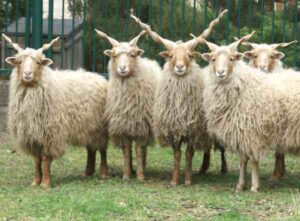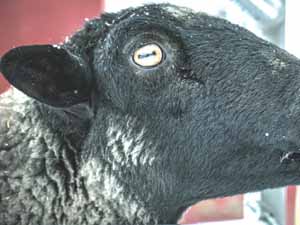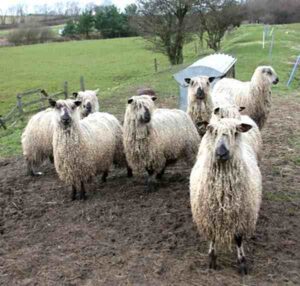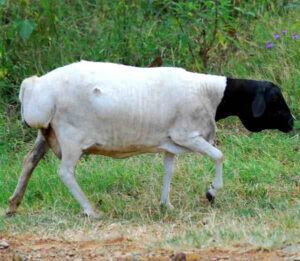The Karayaka sheep is a dual-purpose breed of domestic sheep originated from Turkey. It is good for producing both meat and milk, and their wool is also used in carpets.
he breed is mostly found in the northern Anatolia in Turkey, and is strongly identified with the village of Karayaka.
The breed is also distributed along the eastern half of the Black Sea coast, especially in Giresun, Ordu, Sinop, Samsun and Tokat. And it is also raised in Duzce, in the region of Western Black sea.
The quality of grazing in the areas where these animals are distributed is quite high. And grazing season in these areas is longer than in most of the other regions.
Flock size of the Karayaka sheep varies from 5 to 200 heads. The flocks are usually smaller in size in the coastal areas and larger in the inner parts/regions of the country.
Most of the animals go to the mountains in the summer in large communal flocks, and usually return in the winter.
There were around 1.7 million Karayaka sheep available in Turkey in the year of 1983. And that number was about 3.5 percent of the total sheep population there.
But today, total number of this breed has decreased to around 800000, mainly due to occasions of crossbreeding.
Their total numbers also decreased for the farmers, shifting to raising other more profitable sheep breeds. Read some more information about this breed below.
Karayaka Sheep Characteristics
The Karayaka sheep is a small sized breed. It is usually of white color with black eyes or black legs and head. Sometimes, black or brown animals are also seen.
These animals are classified as a long-thin tailed breed. The rams usually have thick spiral horns, and the ewes are generally polled or hornless.
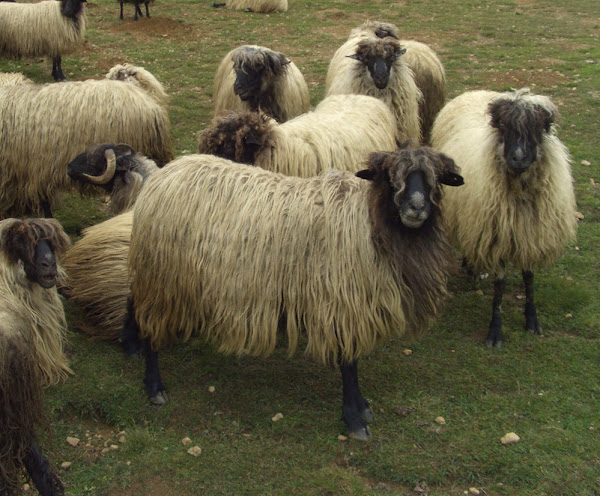
The ewes on average stand around 24.1 inches at the withers, and the rams are larger than the ewes.
Average live body weight of the mature Karayaka sheep is between 35 and 40 kg. Photo and info from Wikipedia.
Uses
Karayaka sheep are dual-purpose animals. They are raised for both meat and milk production.
Special Notes
The Karayaka sheep are hardy animals, and they are well suited to their local climates. As a dual-purpose animal, they are good for both meat and milk production.
The ewes on average produce about 40-45 liters of milk during their lactation period. Their lactation period is between 130 and 140 days.
Their milk production is one of the lowest among the native sheep breeds in Turkey. Probably it is the main reason the breed is not preferred by the local farmers for large scale sheep farming business.
Meat of the Karayaka sheep is of good quality, and they grow relatively faster. Along with meat and milk production, the Karayaka sheep is also used for wool.
Their wool is used in carpets. The ewes produce around 1.8 to 2.4 kg of fleece with a 8.3 to 11 inches staple length and 39 to 43 micron diameter.
However, review full breed profile of the Karayaka sheep in the following chart.
| Breed Name | Karayaka |
| Other Name | Black Neck |
| Breed Purpose | Meat and milk |
| Special Notes | Very hardy and strong animals, well suited to their local climates, dual-purpose animals, good for both meat and milk production, also used for wool production and the wool is used in carpets, the ewes on average produce around 40-45 kg of milk per lactation, grow relatively faster |
| Breed Size | Small |
| Weight | Between 35 and 40 kg. |
| Horns | Rams have horns, but the ewes are naturally polled |
| Climate Tolerance | Native climates |
| Color | White |
| Rarity | Common |
| Country/Place of Origin | Turkey |

